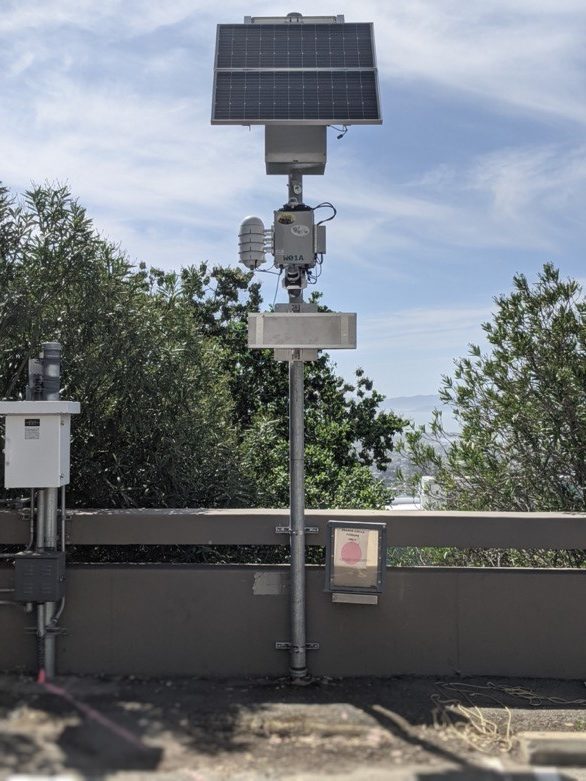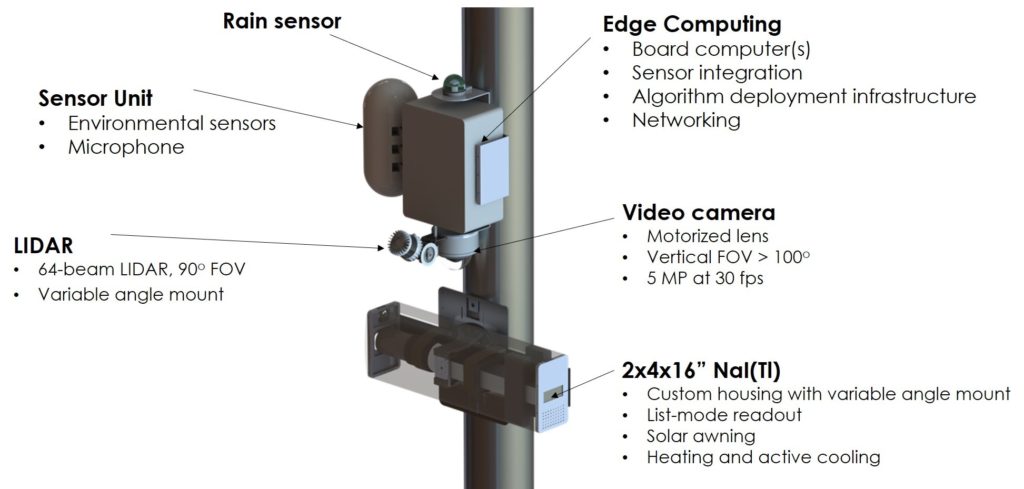A team from LBNL’s Applied Nuclear Physics program, in collaboration with scientists from Argonne National Laboratory, have been working to realize a city-scale multi-sensor testbed with which to explore new techniques in intelligent, networked sensing for radiological and nuclear detection. Figure 1 shows a prototype system installed at LBNL for evaluation. In June and July, four sensor systems will be deployed in Chicago. A full network of up to twenty systems is scheduled for completion by Spring 2023.
The detection, identification, and localization of illicit radiological and nuclear material continues to be a key component of non-proliferation and nuclear security efforts around the world. LBNL researchers have long been at the forefront of developing new detector systems and algorithms for these important applications. One place where advances in telecommunications, edge computing, and cloud computing technologies can have a significant impact on these efforts is the development of networked radiation detectors. Deploying multi-sensor systems at strategic locations in urban environments has the potential to provide persistent radiological/nuclear monitoring with a high probability of detecting mobile radiological sources or nuclear material. These concepts can be enhanced through the development of new networked detection capabilities including the integration of contextual sensors to aid in the interpretation of radiological measurements, algorithms that are able to adapt to changing environmental conditions, and the fusion of data from across the network of sensors.
The LBNL-led ‘Platforms and Algorithms for Networked Detection and Analysis’ project (PANDA) and the Argonne ‘Domain Aware Waggle Network’ project (DAWN) have developed unique sensor systems that combine large-volume gamma-ray detectors with a suite of contextual sensors including video, Lidar, meteorological sensors, edge computers, and network connectivity.
Figure 2 shows an engineering drawing of a PANDA-DAWN sensor system.
In addition to developing these new sensor systems, the LBNL team has also been developing and implementing advanced algorithms for radiological anomaly detection, contextual sensor processing, and data fusion. The data collected with the PANDA-DAWN network, along with advances in algorithms, system design, and network infrastructure developed through these projects, will pave the way for next-generation radiological detection in the field and serve as a model and springboard for other sensing modalities such as chemical, biological, and environmental.
The PANDA project is led by Ren Cooper. Nico Abgrall, Mark Bandstra, Dan Hellfeld, Tenzing Joshi, Victor Negut, Dan Parker, Brian Quiter, Emil Rofors, and Marco Salathe have all made significant contributions. The project is supported by the Department of Energy, National Nuclear Security Administration, Office of Defense Nuclear Nonproliferation Research and Development.

